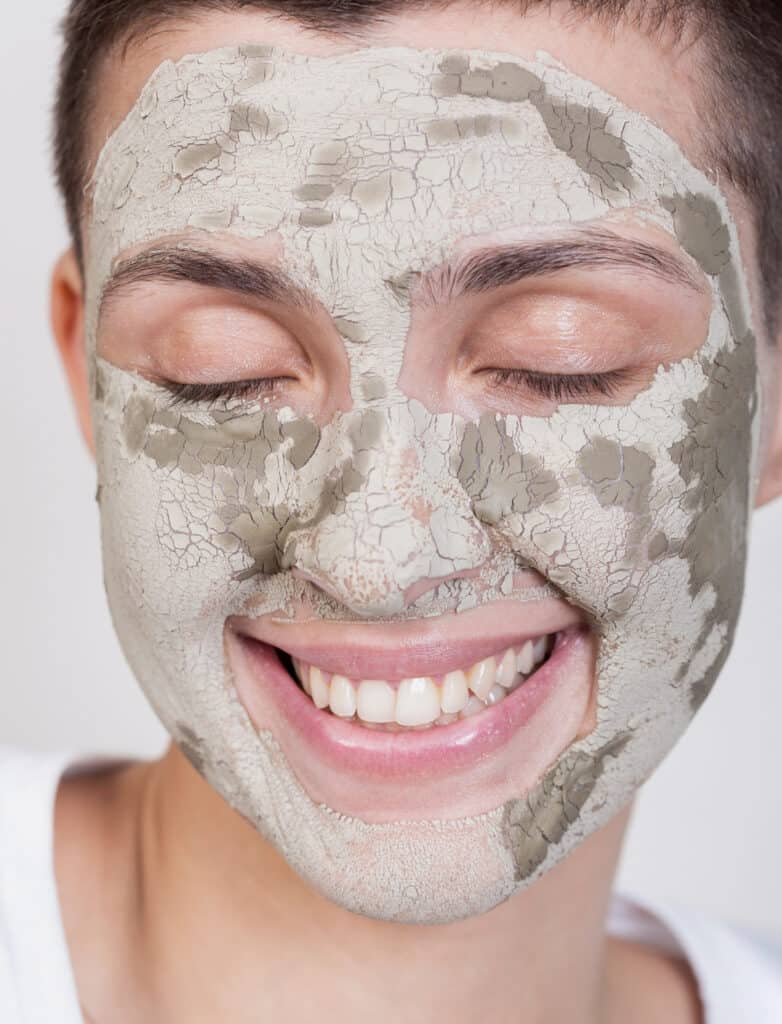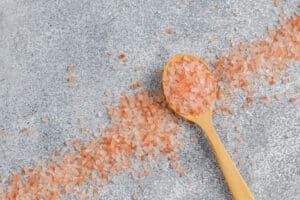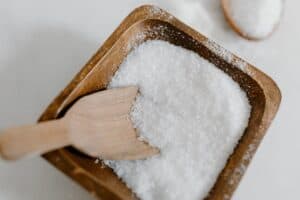When it comes to deep cleansing and rejuvenation, few skincare products rival the power of a good face mask. Two of the most popular choices: Dead Sea mud masks and charcoal masks promise clearer, smoother, more radiant skin.
Yet, while they might seem similar at first glance, they’re actually very different in their mineral content, mechanism, and best suited skin types.
So, which one is right for your skin? Let’s break it down ingredient by ingredient, benefit by benefit, so you can make a smart choice for your next self care ritual.

What Is a Dead Sea Mud Mask?
A Dead Sea mud mask is made from mineral rich mud harvested from the shores of the Dead Sea, one of the saltiest and most therapeutic bodies of water in the world. This mud isn’t just regular clay; it’s loaded with a unique concentration of minerals like magnesium, calcium, potassium, and sulfur elements known to support the skin’s barrier and encourage renewal.
For centuries, people have traveled to the Dead Sea to soak in its natural mud baths. Today, brands have bottled that same luxury into convenient jars, making it easy to enjoy the detoxifying and rejuvenating effects at home.
Key characteristics:
-
Thick, creamy texture
-
Naturally mineral rich
-
Mild earthy scent
-
Suits most skin types, especially combination and dry
What Is a Charcoal Mask?
Charcoal mask is made using activated charcoal, a carbon based material processed at high temperatures to create a porous structure. Those tiny pores act like magnets, drawing out impurities, toxins, and excess oil from the skin.
It’s especially loved by those with oily or acne skin, since it helps control sebum, unclog pores, and reduce shine.
Charcoal masks are often combined with other clarifying ingredients like kaolin clay, tea tree oil, or salicylic acid for extra detox power.
Key characteristics:
-
Lightweight or gel texture
-
Deep black color
-
Strong purifying action
-
Best for oily, congested, or acne skin
The Science of Detox: How Each Mask Works
While both masks are labeled “detoxifying,” they work in different ways.
-
Dead Sea Mud Mask: Works by delivering minerals that help balance moisture and improve barrier function while gently absorbing excess oil. It’s both purifying and nourishing.
-
Charcoal Mask: Works like a sponge, adsorbing (binding to) oil, dirt, and pollutants on the surface of the skin. It’s deeply cleansing but can be drying if overused.
Think of the Dead Sea mud as a mineral replenisher and charcoal as a pore vacuum.
Benefits of a Dead Sea Mud Mask
If your skin feels dull, flaky, or tired, Dead Sea mud can help restore vitality. Here’s why:
1. Deep Cleansing Without Stripping
Dead Sea mud removes impurities gently. Unlike some clay masks, it doesn’t leave your skin feeling tight or dehydrated.
2. Mineral Enrichment
The unique mineral blend nourishes and helps strengthen the skin’s barrier. Magnesium, for example, supports healing and hydration.
3. Improved Circulation
When applied, the mask boosts blood flow, giving you that post mask healthy glow.
4. Calms and Soothes
Natural sulfur and magnesium reduce redness and calm inflammation, great for sensitive or mature skin.
5. Helps With Breakouts
By clearing pores and reducing surface oil, Dead Sea mud can minimize occasional blemishes without irritation.
Benefits of a Charcoal Mask
If congestion and shine are your biggest concerns, a charcoal mask could be your new favorite.
1. Deep Pore Detox
Activated charcoal binds to dirt and oil, helping purge impurities from pores.
2. Controls Oil and Shine
Great for people who battle midday grease or a shiny T-zone.
3. Minimizes Blackheads
By keeping pores clear, it helps reduce blackheads over time.
4. Smooths Texture
Regular use can refine the look of pores and give the skin a smoother appearance.
5. Boosts Absorption of Skincare
Clean, purified pores make it easier for your serums and moisturizers to penetrate effectively.
Which Skin Type Should Use Each Mask?
Not all skin is created equal. Here’s how to match your mask to your skin type:
| Skin Type | Best Mask | Why |
|---|---|---|
| Oily / Acne-Prone | Charcoal Mask | Helps absorb excess oil and clear clogged pores |
| Dry / Dehydrated | Dead Sea Mud Mask | Provides minerals and moisture without stripping |
| Sensitive | Dead Sea Mud Mask | Soothing minerals reduce redness and irritation |
| Combination | Alternate or mix both | Charcoal on T-zone, Dead Sea mud on cheeks |
| Mature | Dead Sea Mud Mask | Supports barrier repair and softens fine lines |
If you’re unsure, start with Dead Sea mud, since it’s gentler and less likely to cause dryness.
How to Use Them Effectively
Getting the most from either mask is all about timing and technique.
Dead Sea Mud Mask
-
Apply to clean, damp skin.
-
Leave on for 10–15 minutes, but don’t let it fully dry, keep it slightly moist for best results.
-
Rinse with warm water, then follow with toner and moisturizer.
-
Use 1–2 times a week.
Tip: If you have combination skin, apply it only where you need hydration and calmness.
Charcoal Mask
-
Apply to clean, dry skin.
-
Leave on for 5–10 minutes, depending on sensitivity.
-
Rinse thoroughly; follow with a soothing serum or moisturizer.
-
Limit to once a week if skin is dry or sensitive.
Tip: Apply only to congested zones (like nose and forehead) to avoid over drying.
Head-to-Head Comparison
| Feature | Dead Sea Mud Mask | Charcoal Mask |
|---|---|---|
| Main Function | Detox + Nourish | Detox + Purify |
| Texture | Creamy, smooth | Light, gel-like |
| Best For | Dry, sensitive, mature | Oily, acne-prone |
| Key Ingredients | Magnesium, Calcium, Sulfur | Activated Charcoal |
| Hydration | High | Low |
| Risk of Dryness | Minimal | Moderate |
| After-Feel | Soft, balanced | Clean, matte |
| Use Frequency | 1–2x per week | 1x per week |
Can You Use Both?
Absolutely. In fact, many dermatologists recommend multi masking using different masks on different areas. For example:
-
Apply charcoal to your oily T-zone.
-
Apply Dead Sea mud to your drier cheeks or jawline.
This way, you target each concern without over-treating your skin.
Natural Beauty Meets Modern Science
Both Dead Sea mud and activated charcoal are natural ingredients backed by modern skincare science. However, the mineral complexity of Dead Sea mud gives it a nurturing edge. It’s not just pulling out impurities, it’s feeding your skin essential elements that support long term resilience.
Meanwhile, charcoal masks are your quick fix for days when congestion and oiliness take over. The key is balance alternate or combine them depending on how your skin feels that week.
Choosing the Right Product
Not all masks are created equal. Look for:
-
Authentic Dead Sea mud (listed as “Maris Limus” or “Dead Sea Silt”)
-
Pure activated charcoal (avoid artificial colors or heavy fragrances)
-
No harsh alcohols or sulfates
-
Added hydrators like aloe vera, hyaluronic acid, or glycerin
If you’re buying for sensitive skin, choose fragrance free options.
Expert Tip: Listen to Your Skin
Skincare isn’t one size fits all. The same mask that clears one person’s skin might dry out another’s. Always start with a patch test, and don’t overuse detox masks. Remember, the healthiest skin is balanced skin, not squeaky clean or overly matte.
Final Thoughts
When comparing Dead Sea Mud Mask vs Charcoal Mask, the best choice depends on your skin’s needs.
-
Choose Dead Sea Mud Mask if your skin is dry, sensitive, or needs mineral nourishment.
-
Choose Charcoal Mask if your skin is oily, congested, or acne prone.
For most people, using both strategically gives the best of both worlds: clean pores, calm skin, and a radiant glow.
Treat masking as a ritual, not a chore. When you tune in to what your skin truly needs, the results show up in the mirror.
Related content:
Discover the Amazing Benefits of Dead Sea Mud Masks
“If you buy through these links I may get credit on the sale and I appreciate it, it helps support what we are doing”





